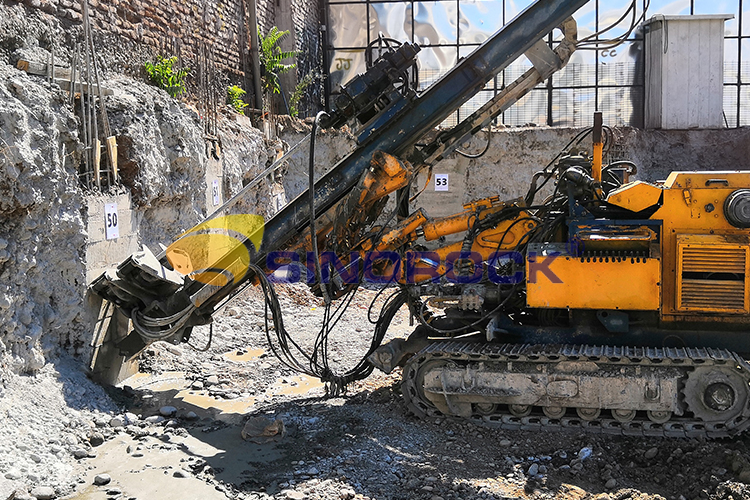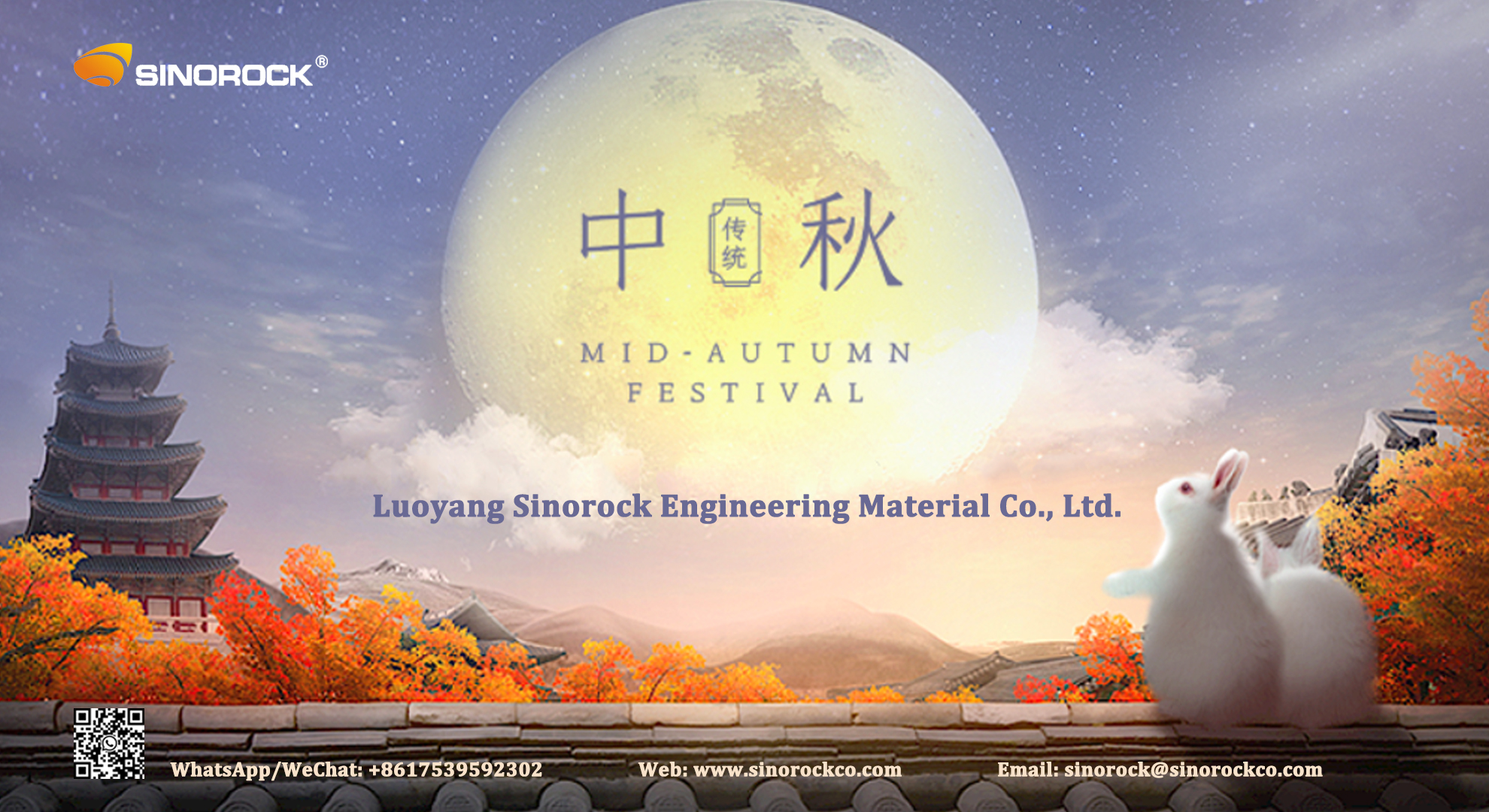3 Common Problems and Countermeasures in Deep Foundation Support
Time:2025-01-07From:sinorock View:
Introduction
Deep foundation support plays a crucial role in ensuring the stability of structures that are built on difficult ground conditions, such as soft soils, deep layers of loose material, or highly fractured rock. The technology has evolved significantly, especially with the advent of self-drilling rock bolts and anchor systems, which offer robust support in various conditions. However, despite advancements in construction technology, there are still significant challenges encountered during the design and implementation of deep foundation support systems. These challenges can hinder the effectiveness of foundation support and affect the safety and longevity of the structure.
In this article, we explore three common problems that arise in deep foundation support projects and offer practical countermeasures to address these issues. These solutions focus on improving the overall design, construction, and management processes to mitigate risks and improve the stability of foundation support systems.
(1).jpg)
1. Insufficient Surveying and Research of the Terrain
The Importance of Geological and Hydrogeological Surveys
One of the most critical steps in the design of deep foundation support systems is the surveying and analysis of the site's geological and hydrogeological conditions. A comprehensive understanding of the rock, soil, and groundwater behavior is essential for determining the appropriate support system. Without this information, engineers risk selecting an inadequate solution, which can result in foundation instability, settlement issues, or even catastrophic failure.
Hydrogeological conditions, in particular, play a significant role in foundation support. The distribution and behavior of groundwater can affect the strength of surrounding soil and rock, particularly in areas with fluctuating water levels. For example, poorly drained or waterlogged soils may not provide sufficient support for heavy structures. Additionally, seasonal variations in groundwater levels can lead to shifts in soil strength, making it necessary to understand how these fluctuations will impact foundation stability over time.
Countermeasures
To address these challenges, it's crucial to conduct a thorough and detailed site investigation. The following countermeasures can significantly improve the outcome of foundation support projects:
1. Comprehensive Surveying Techniques:
- Utilize a variety of techniques such as geophysical surveys, seismic testing, and borehole drilling to assess both soil and rock conditions accurately. These methods provide insights into subsurface features like fractures, voids, or unexpected soil layers that could affect foundation performance.
2. Seasonal Hydrogeological Assessments:
- Conduct seasonal or time-based assessments of groundwater flow and its impact on the site. Use modern tools like remote sensing, ground-penetrating radar (GPR), and hydrostatic pressure monitoring to identify variations in groundwater levels.
3. Integration of Advanced Technology:
- Implement digital solutions such as 3D modeling and simulation software, which can predict potential geological risks and help in the optimization of the foundation support design. These technologies allow for more accurate predictions and better preparation.
By adopting these measures, engineers can ensure that deep foundation support systems are designed to meet the unique challenges posed by the geological and hydrogeological conditions of the site.
2. Inadequate Analysis of the Support System and Environmental Integration
The Complexity of Excavation and Foundation Behavior
The design of deep foundation support systems should not be based solely on static soil and rock properties but must also consider how excavation and environmental factors interact with the support structure over time. A common problem in foundation support projects is the failure to account for the dynamic behavior of soil and rock during the excavation process. Excavation-induced deformations can lead to unexpected settlement, tilting, or even collapse if the support system isn't properly designed to handle these changes.
(2).jpg)
Foundation behavior is often affected by factors such as the size and shape of the excavation, the depth of the foundation, and the surrounding soil or rock mass. If these factors are not properly analyzed, the support system might not effectively resist deformation, and the surrounding environment may not be adequately protected from the effects of construction.
Countermeasures
To address the problem of inadequate analysis, engineers should consider the following countermeasures:
1. Advanced Structural and Geotechnical Simulations:
- Incorporate sophisticated simulation software that can model soil-structure interaction and the effects of excavation on surrounding materials. These simulations can predict how soil and rock will behave under different loading conditions and excavation methods.
2. Real-Time Monitoring During Construction:
- Utilize real-time monitoring technologies to track deformations of both the foundation support system and the surrounding soil during excavation and construction. This allows for early detection of potential problems and enables prompt corrective actions.
3. Detailed Design for Deformation Control:
- Design the support system to withstand and control deformations in the soil. This may include the use of self-drilling rock bolts, which can be installed during excavation to provide immediate stabilization. The bolts integrate drilling, grouting, and anchoring functions, reducing the risk of instability and allowing for efficient reinforcement.
By integrating these countermeasures, engineers can ensure that the foundation support system can adapt to the challenges posed by excavation and environmental conditions, improving overall stability and performance.
3. Construction Management and Quality Control Failures
Common Construction Failures
The construction phase of deep foundation support is where many of the common failures occur. Issues such as over-excavation, improper timing of support installation, and deviations from the original design can significantly affect the foundation's stability and safety. In particular, failure to install the support system in a timely manner or performing operations out of sequence can result in foundation settlements, soil instability, and even collapse in extreme cases.
Additionally, poor construction management can lead to substandard execution, where workers may neglect the quality assurance procedures necessary for ensuring the proper installation of support elements, such as self-drilling rock bolts or anchor rods.
Countermeasures
To address these common construction failures, the following strategies should be implemented:
1. Strict Adherence to Construction Sequencing:
- Construction activities should be performed according to a well-defined schedule and sequence. The excavation should be carefully planned to minimize the exposure of unstable soil or rock, and the installation of support systems should occur as soon as possible after excavation to prevent potential instability.
2. Enhanced Quality Control and Assurance Processes:
- Implement rigorous quality control protocols throughout the construction phase. This includes ensuring that the right materials are used, the self-drilling rock bolts are installed correctly, and the grouting process is completed to specification. Regular inspections and testing, such as load testing of anchor rods, should be conducted to verify the strength and effectiveness of the support system.
3. Real-Time Monitoring for Foundation Stability:
- Use advanced monitoring systems that continuously assess the foundation's stability during construction. These systems can provide valuable data on any unexpected movements or deformations that may signal potential issues, allowing for immediate corrective action.
By ensuring that these countermeasures are in place, construction teams can significantly reduce the risk of failure and ensure that the foundation support system is installed correctly and functions as designed.
Conclusion
In deep foundation support, addressing common problems such as insufficient surveying, inadequate analysis of the support system, and poor construction management is crucial to ensuring the stability and safety of the structure. Through comprehensive site assessments, advanced simulation technologies, and real-time monitoring, engineers can design and implement more reliable foundation support systems.
The role of self-drilling rock bolts, anchor rods, and other modern solutions cannot be overstated. These systems provide efficient, cost-effective, and reliable means of stabilizing foundations, even in complex and challenging environments. By implementing these countermeasures and leveraging the latest in geotechnical engineering innovations, it is possible to overcome the common pitfalls in deep foundation support and ensure the long-term success of construction projects.
latest news
-
(1).jpg)
- 3 Common Problems and Countermeasures in Deep Foundation Support
- Time:2025-01-07From:This Site
- There are many successful cases of deep foundation support design and construction in geotechnical engineering. However, from the perspective of implementation effect, there are some problems in some foundation support projects that have not met the relevant technical standards and quality requirements. Therefore, it is necessary to analyze the problems and deficiencies exposed in previous projects in order to improve the design and construction level of deep foundation support.
- View details
-

- Is Self-drilling Anchor Bolt Installation Tough?
- Time:2024-12-22From:This Site
- This article explores the process of installing self-drilling anchor bolts, addressing their composition, ease of installation, and common applications in geotechnical engineering. Learn why this system simplifies construction, making it a popular choice for various geotechnical projects.
- View details
-

- Self-drilling anchor bolts in tunnel surrounding rock support
- Time:2024-12-20From:This Site
- Discover the benefits, features, and advancements of self-drilling anchor bolts in tunnel support, ensuring rock stability, cost-efficiency, and safety in modern urban and geotechnical projects.
- View details
-
.png)
- International Women's Day with Strawberry-picking
- Time:2024-03-09From:This Site
- Marked the annual observance of International Women's Day, and to commemorate this significant event, Sinorock organized a special strawberry-picking event exclusively for its female employees.
- View details
-

- Celebrate the 74th anniversary of the founding of the People's Republic of China
- Time:2023-10-01From:This Site
- On October 1st every year, we observe the annual National Day, commemorating the birth of our beloved motherland.
- View details
-

- Happy Mid-Autumn Festival!
- Time:2023-09-29From:This Site
- The Mid-Autumn Festival which also known as the Mooncake Festival. This annual festival falls on the fifteenth day of the eighth month of the lunar calendar and is called the Mid-Autumn Festival because it falls in the middle of the three months of autumn.
- View details
-
.jpg)
- SINOROCK to Attend EXPOMINA PERÚ 2024 in Lima, Peru
- Time:2024-08-10From:This Site
- Sinorock to Attend EXPOMINA PERÚ 2024 in Lima, Peru
- View details
-
.jpg)
- SINOROCK to Participate in MINING AND METALS CENTRAL ASIA 2024
- Time:2024-08-08From:This Site
- SINOROCK to Participate in MINING AND METALS CENTRAL ASIA 2024
- View details
-

- SINOROCK Gears Up for UGOL ROSSII & MINING 2024 with Custom Mining Solutions
- Time:2024-05-15From:This Site
- SINOROCK is thrilled to announce its participation in the highly anticipated 32nd International Trade Fair for Mining Technology, UGOL ROSSII & MINING 2024. The event will take place at the Exhibition complex "Kuzbass Fair" in Novokuznetsk, Kemerovo region - Kuzbass, Russia, from June 4th to 7th, 2024.
- View details
 Download
Download 


